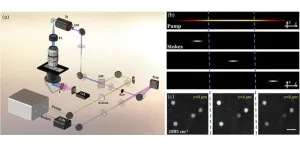The side effects of large-scale forestation initiatives could reduce the CO2 removal benefits by up to a third Researchers at the University of Sheffield used computer models, which simulate the land, ocean and atmosphere, to investigate the impact of forestation under future climate scenarios While forestation increases atmospheric CO2 removal, it also changes atmospheric composition and darkens the land surface, reducing its potential to tackle climate change Combining forestation with other climate mitigation strategies is vital for more effective long-term climate action
The side effects of large-scale forestation initiatives could reduce the CO2 removal benefits by up to a third, a pioneering study has found.
The research, led by scientists at the University of Sheffield and published today (Thursday 22 February 2024) in the journal Science, provides a new insight into the broader impacts of forestation on the Earth's climate, indicating that its positive impact is potentially smaller than previously thought.
Carbon removal strategies, such as forestation, alongside greenhouse gas emissions reduction efforts, have been recognised by the IPCC as essential measures to mitigate the risk of dangerous future climate change.
By simulating global forest expansion with advanced computer modelling techniques, academics from the University of Sheffield, in collaboration with the Universities of Leeds and Cambridge, and NCAR and WWF, found that while forestation increases absorption of carbon dioxide from the atmosphere, other complex Earth System responses could together partially offset these benefits by up to a third.
Dr James Weber, from the University of Sheffield’s School of Biosciences and lead author of the study, said: “The public are bombarded with messages about climate change, and the suggestion that you can plant trees to offset your carbon emissions is widespread. Many businesses now offer to plant a tree with a purchase, and some countries plan to expand, conserve, and restore forests.
“Trees can help tackle climate change, but we need to be careful about relying on them. We need to evaluate forestation, and other climate change mitigation strategies, in detail. This will help identify limitations and unintended consequences so these can be minimised where possible.”
The study, which simulated wide scale forestation under two future scenarios—one with minimal efforts to tackle climate change and another with extensive mitigation measures alongside forestation—found that forestation leads to increased CO2 removal. However, it also reduces the reflectivity of the land surface (as trees are darker than grassland) and changes the atmospheric concentrations of other greenhouse gases (methane and ozone) and tiny particles called aerosols. Altogether, these indirect effects partially offset the CO2 reduction benefits, by up to 30 per cent.
The study also found that when forestation is implemented alongside other strategies to tackle climate change, such as reducing fossil fuel emissions, the negative impacts of these indirect effects are lower. This highlights the importance of combining forestation efforts with complementary climate change mitigation strategies for more effective long-term climate action.
Dr Maria Val Martin, University of Sheffield UKRI Future Leader Fellow and senior author of the study, said: “Drastic CO2 emission reductions along with large-scale removal of atmospheric CO2 are vital to combat climate change effectively. Our study provides a comprehensive analysis of the indirect climate impacts of forestation, revealing that they partially counter the climate benefits achieved through carbon sequestration. Understanding these indirect side effects is essential for developing effective solutions to achieving net-zero emissions.”
Dr. Stephanie Roe, WWF Global Climate and Energy Lead Scientist, IPCC AR6 Report Lead Author, and co-author of the study said: “We know that forests are critically important for biodiversity, water, ecosystem services, and the climate. What this research shows is that the effectiveness of reforestation for climate mitigation declines significantly in higher latitudes and unless paired with deep emission reductions which reduces air pollution. It underscores the importance of properly planning reforestation efforts and adequately accounting for biophysical and future climate impacts in different latitudes and regions. Importantly, the study finds that preventing deforestation, when compared to reforestation efforts, is a far more efficient way to mitigate climate change.”
Dr Daniel Grosvenor, from the University of Leeds and the Met Office, and co-author of the study said: “What's interesting about this study is that it examines the side effects of forestation that occur via changes in atmospheric chemistry, aerosol particles and surface reflectivity. It shows that the cooling impact of carbon dioxide removal from an extensive, but feasible, global forest expansion could be considerably reduced due to those side effects. This would make it harder than expected to mitigate climate change and to reach the Paris agreement target.”
Professor David Edwards, Head of Tropical Ecology and Conservation Group at the University of Cambridge, and not involved in the study, said: “Global restoration targets are massive – 350 million hectares by 2030 under the Bonn Challenge alone. This study makes a major advance in revealing that the combined impacts of albedo and atmospheric chemistry from forestation offset some of the perceived climate-change-mitigation benefits generated via carbon sequestration. Critically, the study shows that not all forestation is equal, with more favourable potential in the tropics due to aerosol scattering that can offset warming caused by reduced albedo, whereas forestation at higher latitudes may well result in net global warming.”
Professor Dominick Spracklen, Professor of Biosphere-Atmosphere Interactions at the University of Leeds, and not involved in the study, said: "This study highlights the amazingly complex role of forests in our climate system. Through calculating how forests alter atmospheric composition, this study provides one of the most comprehensive assessments of the climate impacts of large-scale forestation."
ENDS
Media contact: Alice Fletcher, Media and PR Assistant, alice.fletcher@sheffield.ac.uk
The University of Sheffield
The University of Sheffield is a leading Russell Group university, with a world-class reputation. Over 30,000 students from 150 countries study at Sheffield. In a truly global community, they learn alongside over 1,500 of the world’s leading academics.
Sheffield’s world-shaping research feeds into its excellent education. Students learn at the leading edge of discovery from researchers who are tackling today’s biggest global challenges.
Driven by outstanding people, staff and students share a commitment to changing the world for the better, through the power and application of ideas and knowledge.
From the first documented use of penicillin as a therapy in 1930, to building Europe’s largest research-led manufacturing cluster, Sheffield’s inventive spirit and top quality research environment sets it apart.
Current research partners include Boeing, Rolls-Royce, Unilever, AstraZeneca, GlaxoSmithKline, Siemens and Airbus, as well as many government agencies and charitable foundations.
Sheffield’s Students’ Union has won the Whatuni Student Choice Award for Best Students’ Union for six consecutive years. Students can choose from 350 societies and clubs, or join over 2,000 volunteers.
Over 300,000 Sheffield alumni from 205 different countries make a significant influence across the world, with six Nobel Prize winners included amongst former staff and students.
To find out more, visit: www.sheffield.ac.uk
END



